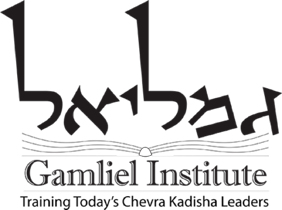Introduction
The phenomenon of death is mysterious. The occurrence of death is very real, often a shattering blow to the life and faith of the survivors. They need the spiritual support of their community and the community needs a way to offer support through traditional, sanctioned ritual. The ritual offers a religious way to make manifest that the mourner is not alone, this is the way of all the world, and you will come through it. The Chevra Kadisha provides the mourner and the community an authentic pathway; they don’t need to improvise or look to a commercial funeral director for guidance. Your Jewish congregation knows your loss and cares for you; as a Jew you will also care for others.
We Have a Rich Death History
Jewish practices have always provided an avenue for community support from sickness to death, from funeral to burial, from grieving to comforting. We trace our Jewish practices of burial to when Abraham bought a burial place for Sarah, and of shiva to when Joseph mourned for his father Jacob for seven days. We learn from Job to listen to the mourner, as we should do when we comfort them. Rabbi Gamliel in the 1st century CE established the principle of equality and economy in death. As far back as the 1300’s, we have commentary on the Chevra Kadisha performing funerals and burials, promoting community cohesion and supporting Jewish continuity. The Chevra Kadisha helped to comfort the bereaved during time of need. It was “bedrock”, not a peripheral part, in the lives of Jews.
The Problem
Acting death in movies and television pervades our experience. However we rarely see real death, which now is more common at the hospital or nursing home. Our aversion to death combined with our societal emphasis on youth, have pre-disposed us to willingly give up care of the dead.
The advent of the funeral business and American style funerals elevated the undertaker to a position of religious authority. Jewish death rituals are now in the hands of for-profit companies that own funeral homes and cemeteries. Many of them have been bought by international publicly traded companies, which have no connection with our local communities. Services and products promoted by these companies substitute prevailing American practices, such as embalming and cosmetizing the body and exhibiting it in a lavish coffin at a pre-funeral reception, for traditional Jewish practices.
Many Jewish families receive little guidance or emotional support at their time of need. They pay exorbitantly for funerals and may attempt to save money by choosing cremation. Families are often treated badly by cemeteries and may become victims of cemetery mismanagement. Sensitivity, caring, and spirituality seem to be absent from this process.
Recapturing Our Tradition
The control of Jewish death ritual should be in the community. Rabbi Arnold Goodman helped organize a Chevra Kadisha in 1975 at Congregation Adath Jeshurun in Minneapolis. His book,A Plain Pine Box, is a call to action advocating a return to simple, traditional Jewish funerals. The Chevra Kadisha model described by Goodman was taken up and enhanced in the Washington area by Teferith Israel Synagogue. Only a year later the Jewish Funeral Practices Committee of Greater Washington (JFPCGW) was organized and has grown steadily since then. Now representing over 40 synagogues, this group holds true the to message of a return to affordable, traditional Jewish funeral practice.
Throughout the United States and Canada, other pockets of Jews, in rural and urban areas, large synagogues and small, are also heeding the call to full participation in Jewish funeral practices and return of control to the community. A modern Chevra Kadisha may provide pre-need education and negotiate funeral and burial agreements. In some larger congregations, 50-75 people may participate as chaverim who work directly with the bereaved and mediate between them and the funeral and burial providers, or perform the washing (tahara) ritual, or guard the body until it is buried (shmira), or provide a meal of condolence, or set up and lead shiva, or stay in touch with the bereaved for some period after death. In a few years, they serve scores or hundreds of their fellow Jews, who don’t forget.
There are numerous traditional Orthodox Chevrei Kadisha that provide Tahara for anyone in the community. In Chicago, there is a non-profit funeral contract. In Los Angeles a Conservative synagogue, and in Seattle an Orthodox synagogue, own and operates a cemetery and funeral home. In New York City, a federation of Jewish institutions purchased and operates a funeral home.

